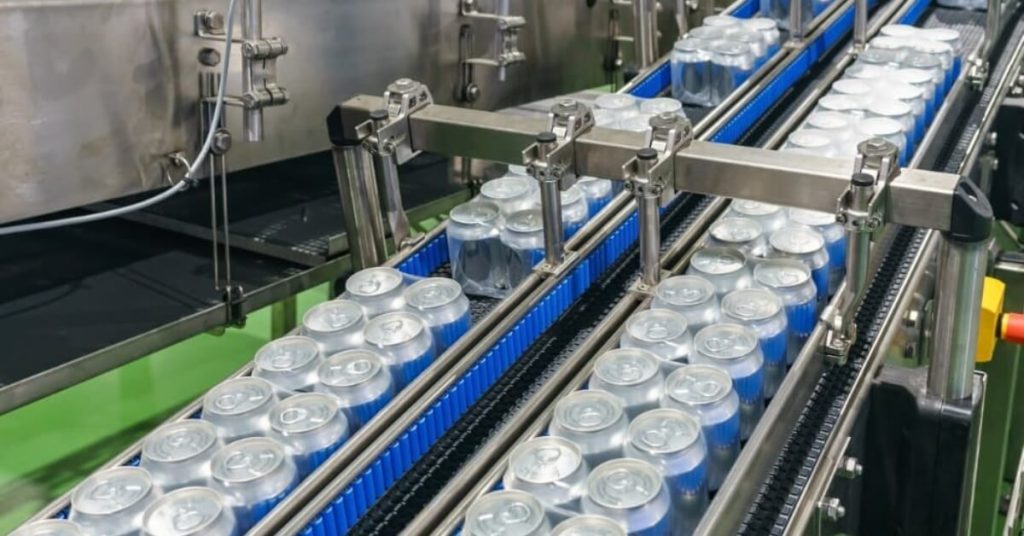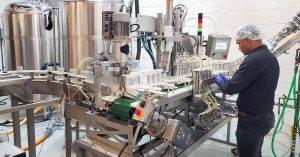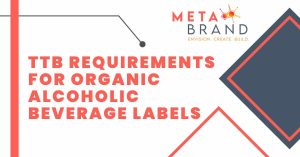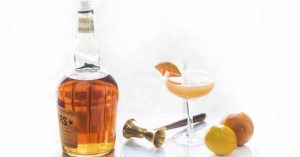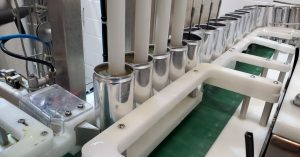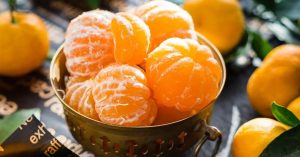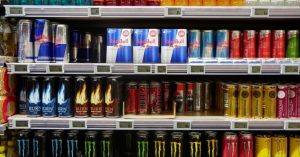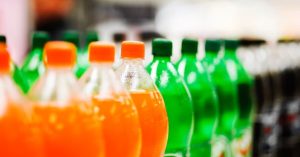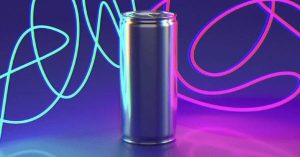The modern beverage industry has embraced automation and high-tech machinery to help businesses maximize efficiency, increase production, and boost profits. A canned juice bottling line is an example of cutting-edge technology that can help beverage companies achieve their goals.
Canned juice production is a multi-step process that includes filling, capping, packaging, and labeling. These operations can be time-consuming, labor-intensive, and prone to errors when done manually. A canned juice bottling line automates these operations, increasing the speed and quality of production while reducing errors and operational costs. This guide explores what these are and seven things they can do for your beverage business.
What is a Canned Juice Bottling Line? Exploring its Benefits
Canned juice bottling lines are automated systems designed to fill, cap, package, and label canned juices efficiently and accurately. The line consists of separate, connected machines that work in tandem to complete each step of the production process. Typical line components include a conveyor belt, fillers (liquid and powder), cappers, sealers, wrap-around labeling machines, and various packaging equipment.
Types of Canned Juice Bottling Lines: Manual, Partially Automatic, Fully Automatic
There are three main types: manual, partially automatic, and fully automatic. Your chosen type will depend on your production needs, budget, and available space.
Manual Canned Juice Bottling Lines: Features and Advantages
They are the most basic type and require manual labor to operate. Manual lines are slower and prone to errors but are also the most affordable option for small-scale businesses. They handle small volumes of production with lower throughput and slower speeds.
Partially Automatic Canned Juice Bottling Lines: Streamlining Production
Partially automatic lines are a step up from manual lines. They require less manual labor and are more efficient, but they still need human input. These lines can handle higher production volumes with faster speeds and higher throughput. They are larger and require more space than manual lines but are affordable for many small businesses.
Fully Automatic Canned Juice Bottling Lines: Enhancing Efficiency and Output
Fully automatic lines are the most advanced and efficient type. They require no manual labor, relying instead on automated machines to handle all aspects of production.
These lines feature cutting-edge technologies, such as vision systems, integrated robotics, and advanced programming, that can handle higher production volumes with greater accuracy and precision. They are more expensive, but they provide the highest return on investment.
Do your due diligence when investing in a canned juice bottling line to ensure you get the most efficient and cost-effective option for your business. Consider the features, capabilities, and performance of the line and its capacity for scalability.
7 Benefits of Using a Canned Juice Bottling Line for Your Business
Beverage companies increasingly leverage canned juice bottling lines to help streamline their production processes and maximize efficiency, significantly reducing time-to-market and increasing profits. Here are seven things they can do:
1.Accurately Fill Cans with the Desired Amount: Canned Juice Bottling Line Advantages
Juice cans are available in different sizes and shapes depending on product type and quantity requirements. These lines have fillers that accurately dispense the desired amount of liquid into the cans. The fillers are precise and accurate, eliminating the risk of over- or underfilling. The machine can also adjust for various factors, such as temperature and viscosity, ensuring accuracy and consistency.
2.Tightly Seal Cans for Maximum Freshness and Extended Shelf Life
The sealing process is crucial for preserving product quality and shelf life. Contamination from the air and other external elements can lead to spoilage, resulting in costly losses, product recalls, and damage to your brand’s reputation. It also reduces your product’s shelf life.
The capping station of the line accurately and quickly attaches lids to cans securely, creating a hermetic seal that retains freshness and flavor. A seal is also a tamper-proof indicator of product quality and that the product hasn’t been tampered with.
3. Apply Labels to Cans for Identification and Brand Recognition
Labels are the face of your product, providing vital information about contents, ingredients, nutritional facts, brand identity, warnings, and other details required by law. It’s what customers see, touch, and read before purchasing a product.
Canned juice bottling lines come equipped with high-speed wrap-around labeling machines that efficiently apply labels to cans in precise locations. This ensures accuracy and consistency while preserving the integrity of your brand. The laser coding option also helps imprint production and expiration dates for quality control. Consumers will refer to this information, making it easier to trust your product.
4.Automate the Packaging Process for Efficient Distribution
These machines also come with several packaging options, such as shrink wrapping and boxing, that quickly and accurately package cans into boxes, pallets, and other containers for easy transportation and efficient distribution.
The integrated robotics system helps increase the speed and accuracy of this step further, giving you more control over the entire production process. It can adjust to different product sizes, shapes, and weights, increasing the versatility of your line.
5. Ensure Quality Control and Consistency with Automated Inspection Systems
Quality control is critical for safe and consistent products. Canned juice bottling lines feature automated inspection systems that check for defects and inconsistencies in the cans, labels, caps, fill levels, and packaging materials.
The system can detect discrepancies in the size, shape, color, weight, or design of the products quickly and accurately. This ensures that products leaving your facility meet regulatory standards and customer expectations. The machine also has CIP (clean-in-place) systems to keep all components clean and contamination-free.
6. Increase Production Speeds and Reduce Operational Costs
High-tech automated systems significantly reduce operational costs, labor expenses, and production times, allowing you to get your products to market faster and at a lower price. Automation also reduces errors, eliminating the need for tedious, manual processes.
These systems run continuously, allowing you to increase production speeds and output with minimal effort. Fewer errors also mean lower product waste and reworks, resulting in greater profits. You get more time to focus on other core areas of your business, like marketing, customer service, and product research.
7. Monitor and Track the Entire Production Process with a Central Control System
The integrated control system helps you monitor and track the entire production process in real time from a single location, giving you greater visibility into the production line. You get access to real-time data on production status, performance, and quality control that you can use to identify problems quickly and make adjustments accordingly, reducing downtime and increasing efficiency.
You can also integrate the system with a range of software applications such as ERP (enterprise resource planning), WMS (warehouse management system), and BPM (business process management). This helps you manage your supply chain, control inventory levels, plan production schedules more accurately, and analyze operational costs.
A canned juice bottling line will help increase efficiency, reduce operational costs, and boost profits. Their high cost may be a significant deterrent for small businesses, but you can outsource your canned juice production processes to a beverage manufacturing company to reduce your capital expenditure.
Maximize Efficiency and Boost Profits with MetaBrand’s Canned Juice Bottling Line Services
MetaBrand eliminates the cost and complexity of installing a canned juice bottling line. We offer on-demand production services that provide access to our state-of-the-art equipment, personnel, and supply chain network without the upfront investment of purchasing your own machines.
Our automated processes help reduce your time-to-market, allowing you to get your products to market faster and increase profits. Contact the experienced MetaBrand team today for more information on our canned juice bottling line services.
Food and Drug Administration (FDA) Regulations: The FDA has established regulations that govern the processing, manufacturing, and packaging of food products, including canned juice. These regulations are designed to ensure that food products are safe for consumption. Specifically, the FDA’s Juice Hazard Analysis Critical Control Point (HACCP) regulations require juice processors to identify and control potential hazards in their operations. This includes microbial contamination, chemical contamination, and physical hazards (source: FDA).
USDA Regulations: The United States Department of Agriculture (USDA) also has regulations specific to canned juices. These include specifications for the quality and condition of the fruits used, as well as the methods of processing and preservation used (source: USDA).
Labeling Regulations: Both the FDA and USDA have specific labeling requirements for canned juices. These include information about the ingredients, nutritional content, and allergen warnings. The labels must also include a statement that the product has been processed to prevent, reduce, or eliminate pathogenic microorganisms (source: FDA).
State and Local Regulations: In addition to federal regulations, canned juice bottling lines may also be subject to state and local regulations. These can vary widely, so it’s important to check with local health departments and regulatory agencies.
International Standards: If the canned juice is intended for export, it may need to meet the standards and regulations of the destination country. This could include additional safety testing, labeling requirements, or certifications.
Remember, this is just a general overview. For specific details on all regulations and standards applicable to a canned juice bottling line, you should consult the relevant regulatory bodies or a legal expert in food law.
There are several packaging options available for canned juice products, each with its unique benefits:
Aluminum Cans: Aluminum cans are lightweight, durable, and fully recyclable. They provide excellent barrier properties against light and oxygen, helping to preserve the quality and freshness of the juice. They are also easy to stack and store, making them a cost-effective option for transportation and retail display.
Tinplate Cans: Tinplate cans consist of a can body, lid, and bottom. Like aluminum cans, they provide a robust barrier against light and oxygen. However, they are typically heavier and may be more expensive than aluminum cans.
Glass Bottles: Glass bottles are highly recyclable and offer a premium look, which can help to enhance the perceived quality of the product. They also provide excellent barrier properties. However, they are heavier and more fragile than cans, which can increase transportation costs and the risk of breakage.
Plastic Bottles (PET): Plastic bottles are lightweight and shatterproof, which can reduce transportation costs and the risk of breakage. They also allow for a high degree of design flexibility. However, they do not provide as strong a barrier against light and oxygen as glass or metal, which may limit their suitability for certain types of juice.
Paper-Plastic Composite Materials and Paper Cartons: These types of packaging are often used for long-life juices. They consist of layers of paper, plastic, and sometimes aluminum, which together provide a strong barrier against light and oxygen. They are lightweight, compact, and easy to transport. However, they can be more difficult to recycle than glass or metal.
Flexible Bag-in-Box and Pouch Packaging: These types of packaging are eco-conscious solutions that keep your fruit juice safe and fresh from fill through end-use.
Choosing the right packaging for canned juice products depends on a variety of factors, including the type of juice, the target market, the intended shelf life, and environmental considerations.
A canned juice bottling line can lead to significant cost savings in several ways:
Increased Efficiency: Automated bottling lines can process large volumes of juice quickly and efficiently, reducing the amount of time and labor required compared to manual methods. This leads to a lower cost per unit, increasing overall profitability.
Reduced Waste: Modern bottling equipment is designed to minimize waste by accurately filling each can without spillage or overfilling. This means less juice is wasted, reducing costs and increasing yield.
Energy Savings: Many modern bottling lines are designed to be energy-efficient, which can lead to significant savings on energy costs over time.
Lower Maintenance Costs: High-quality bottling equipment is robust and designed for continuous operation, reducing the likelihood of breakdowns and the associated maintenance costs. In addition, many machines come with warranties and service agreements that cover routine maintenance.
Reduced Material Costs: Using cans as packaging material can be more cost-effective than other options like glass bottles. Cans are lighter and more compact, leading to lower transportation and storage costs. They are also less likely to break, reducing the risk of product loss.
Savings from Scale: As production volumes increase, the cost per unit often decreases due to economies of scale. A high-capacity bottling line allows companies to take advantage of these savings.
While the initial investment in a canned juice bottling line can be significant, the potential cost savings in the long term make it a worthwhile consideration for many businesses.


